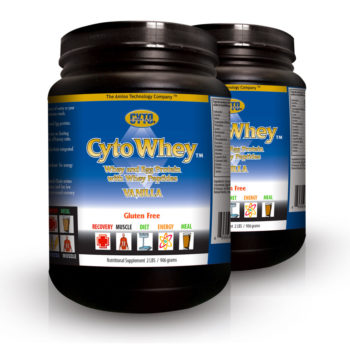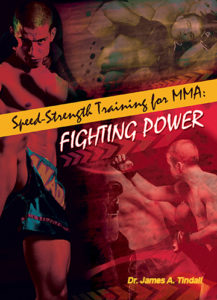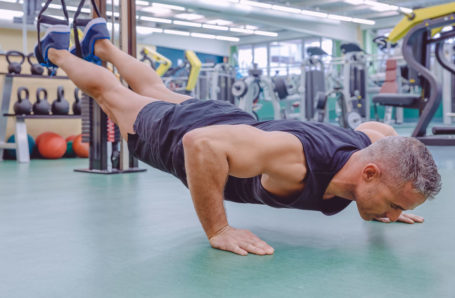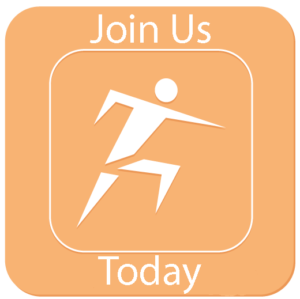This article is geared toward competitive-level athletes in sports, bodybuilding, and related areas or those individuals who aspire to compete in such sports activities. It is therefore, written slightly above the lay level.
To achieve the ultimate performance level and to become the type athlete you know you can be requires that you focus on three primary areas:
1) Sports Specificity;
2) Overloading; and
3) Range of Motion.
Increased skills in each of these areas, regardless of which sport you participate in, will increase your individual athletic performance.
Sports Specificity
This term implies performing training motions, exercise regimens, and training techniques that mimic as closely as possible the sport or activity you participate in. For example, to improve the range of movement for a specific joint movement, you must perform exercises that involve that joint action. Using the shoulders as an example, you would be performing a quick bench press that would mimic a push-off that is commonly done by linemen in football. The idea would be to press the weight back up as soon as it touched your chest during the exercise, changing from concentric to eccentric contraction as quickly as possible. The movement would be very explosive, not a stop and go as is common practice by the average fitness buff, body builders or power lifters. This manner of exercise also enhances fast-twitch muscle fibers. Also, working on specific joints will increase range of motion for that joint only, not others. For example, practicing shoulder mobility exercises may improve your shoulder mobility but it will not affect your hip mobility. To improve hip mobility, you must perform other exercises specific to this joint.
Advertisement: CytoCharge (click on photo for more info)

To develop general levels of all around mobility as an athlete, you must consider the specific mobility requirements of a given sport. You must analyze the technique of the athletic event, identify which joint actions are involved, and determine which joint needs to be improved in terms of the range of movement. Let us examine two examples: A baseball pitcher may require improvements in shoulder and spine mobility and would require exercises specific to those areas in addition to all around training. However, a 200-m hurdler might need to develop hip mobility. You can see that the training for the latter would be much different for the specific joint(s) and muscle(s) involved.
The amount and nature of mobility training required by each athlete will vary according to the individual, athletic event requirements, and an individuals current range of movement for each joint action required for the event. For best results, you should measure the range of movement or motion for specific joint actions to determine the present range and where you wish future improvement to be. Ascertaining this and setting a goal will yield best results.
Thus far, we have discussed joint mobility. As important as this may be, specificity is an important principle in speed-strength training also, where the exercise must be specific to the type of strength required. Thus, strength is related to the demands of the athletic event. To be able to accomplish this, you must have in-depth knowledge of the predominant types of muscular activity associated with your event, the movement pattern involved, and the type of strength required. There are four types of strength. However, we’ll discuss these at a later date. The result of this effort is, that while you should include specific speed-strength training methods that are specific to your event, once again you should also include exercises that are more general in nature to achieve a well-rounded development of physique, speed, and strength. These exercises may not relate too closely to the movement of your athletic event, but they will give you a balanced development, and provide a strong base upon which highly specific exercises can be built.
Advertisement: Don Tolman International (click on photo for more info)

There are many types of athletic events. Typically, we tend to think of most in forms of moving or throwing heavy objects, moving the body weight quickly such as in running hurdles, or in track and field competitions with the shot put and javelin. There is always the opinion that the heavier the object we can throw or move, the better athlete well be. Such practices have permeated training facilities everywhere and always appear to be at the forefront of the obvious solution. However, we now know from experience that doing so can cause an athlete to unconsciously develop compensatory movements within a technique by adjusting to the weight used in training. As a result, most authorities feel that for throwing events, the training implement should be kept within 15% of the competition weight.
Speed-strength athletes often ask me if there is justification for training slowly by those athletes who move so quickly such as sprinters, ball players, martial artists and others? While it is true that training at low velocity increases low velocity strength substantially, such training has little effect on high velocity strength. However, slow velocity training can be of value in stimulating maximum adaptation within the muscles. Muscle growth, with its subsequent increase in contractile strength, is related to the amount of tension developed within a muscle. As a result, when an athlete performs speed-strength work, i.e., high velocity or speed, the force generated is relatively low and therefore fails to stimulate substantial muscular growth. Consequently, if one performed such exercises extensively, he or she may not be inducing maximum adaptation within the muscles. It is important therefore, for the athlete to use fast and slow movements to fully train the muscles. This means that you must work on training both muscle fiber types regardless of what sport or activity you perform, this is especially true if you wish best results and long-term progress.
Overload
To achieve greatest range of motion, you must overload your muscles and stretch to the end of your range of motion. In active mobility, the end of this range is termed the active-end position. Improvements in mobility can only be achieved by working at or beyond the active-end position. This requires overloading of muscles on a frequent basis. To do this requires using passive exercises and kinetic mobility exercises. Passive exercises involve passing the active-end position. This is where the external force can move the limb(s) further than the active contracting of the protagonist muscles. In comparison, kinetic mobility exercises use the momentum of the movement to bounce past the active end position.
You should note that your muscles will only strengthen when forced to operate beyond the customary intensity. There must be a progressive increase in load to enhance the adaptive responses as training develops, and the training stimulus is gradually raised.
Overloading can be achieved by:
1. Increasing the resistance, e.g., adding 10+ pounds to the weight being used;
2. Increasing the number of repetitions within a set or sets with the weight being used; and
3. Increasing the number of sets per exercise which, increases intensity; concurrently you may also reduce the rest cycle from 60 seconds to 45 seconds or, 30 seconds to 20 seconds depending on weight load used.
Persistence
To maintain and improve you must be persistent. An improved range of motion can be achieved by training, but will be maintained only through regular use of mobility exercises, i.e., persistence in training. If you stop sports specific and mobility training, your range of motion will generally decline with time. It will be fixed to the range achieved by the physical activities you perform. For example, if you train continuously, results will maintain themselves at or near peak levels. However, with a cessation or great reduction in training, your improvements will be limited to that training. In other words, when training ceases, the effects due to training will also cease. This will continue at a rate about equal to 1/3 the rate of acquisition.
Advertisement: Amazon (click on photo for more info)

To optimize training, you should train at higher volumes and lower intensity during off season and continue strength training throughout the competitive period with a lower volume, but higher intensity. If you do not, any newly acquired strength will be lost.







